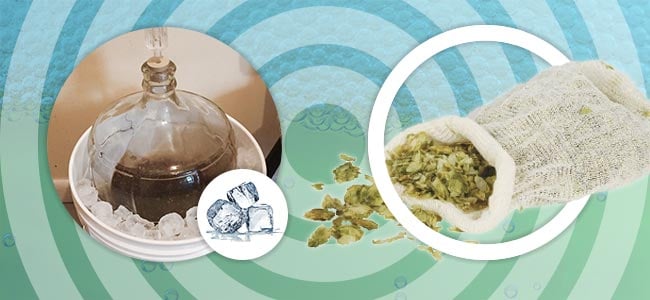What Is Dry Hopping?
Dry hopping imparts the aromas of hops to any given beer. While the initial boil gives a beer its characteristic bitterness, dry hopping at later stages is where aroma and character are further layered into the brew. Find out more about dry hopping and how it can enhance your home-brew.
WHAT IS DRY HOPPING?
Dry hopping is a way of contributing to the complexity of a beer’s flavour profile. Adding dry hops to beer later in the fermentation process adds layers and depth to its aromas and flavours. When steeped for at least 72 hours, dry hopping gives further character to beer without adding bitterness.
There are a number of dry hopping methods, each as effective as the other. Some are permanent and affect the whole batch. Others are on-demand and allow for some experimentation. Beers with significant bitterness like IPAs or pale ales are always dry hopped to add dimension to their flavour.
The stage at which dry hops are added dictates how the brew will ultimately taste. When added during the boil, they can increase its bitterness. Added later, hops amplify flavour. If they are first parboiled, they will unlock both a better aroma and flavour. There is little risk of contamination with dry hopping as hops are naturally antimicrobial and help prevent infection.
The different results from adding hops at each stage are caused by volatile compounds within. When boiled, aromatic compounds are released, escaping in water vapour. This results in bitterness being added to the brew. When dry hopped, these compounds are slowly dissolved and suspended in the beer, contributing a complementary flavour.
VIDEO: DRYHOPPING METHOD
HOW TO DRY HOP
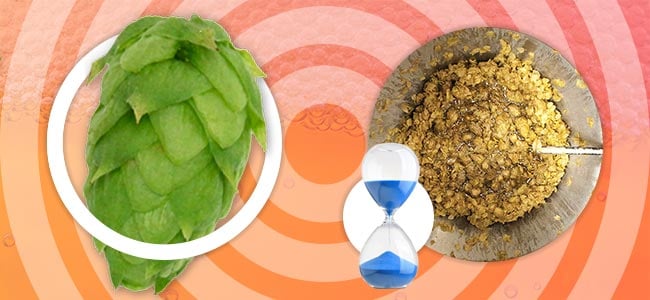
Dry hopping is an uncomplicated process. Simply syphon-off the primary ferment into a secondary ferment vessel and add dry hops. Then, leave them to soak for a minimum of 72 hours. There are a number of variations to this basic method that each brewer is more akin to than others.
Some brewers insist on dry hopping during the primary ferment once initial fermentation has slowed. Others prefer to dry hop in the keg; others still choose to wait until after fermentation is complete. There is no doubt, though, on the effectiveness of dry hopping in terms of upgrading the quality of your home-brew.
WHAT HOPS TO USE
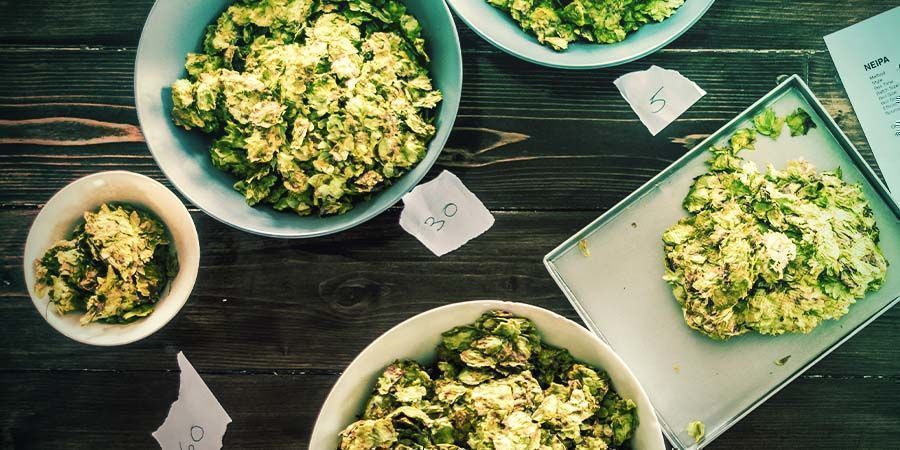
The strange alchemy that is fermentation can take many years to reveal its secrets. Should you use the same hop as the primary flavour to deepen it? Or another species of hop to enhance it? Time will tell as you build experience. To begin with, dry hop with the same species as the aromatic hops used in the recipe. Before committing, experiment with some French pressing to help train your palate.
HOW MUCH & HOW LONG?
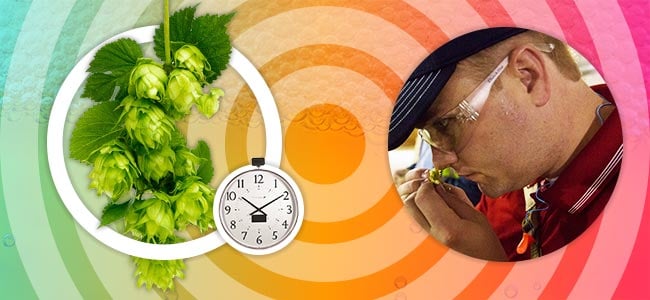
As with the other alchemical factors in home brewing, how many hops to use and how long to soak them depends on a number of circumstances. Some species are more packed with aromatic compounds than others, which can alter flavour significantly. It also depends on what style of beer is being brewed. 15-30g/20l will suffice for an American lager. A sturdier double-IPA will require 50-100g/20l.
An important part of the dry hopping process is to smell and taste the raw ingredients before making a selection. Remember that dry hopping imparts powerful, fresh aromas. Therefore, you must rely on your senses and intuition as you gain experience brewing your own beer.
The hops will need to soak for a minimum of 72 hours to ensure the volatiles are dissolved. Some brewers will leave them to soak for two weeks or more. Keep in mind that there is some risk of vegetal and chlorophyll-type flavours turning up when soaked for too long.
STRAINING HOPS
Adding loose hops will require the brew to be strained. Affix a sterile screen to the bottom of the racking cane prior to syphoning the beer from the secondary fermenter. Auto-siphons, which make life easy for the homebrewer, only have small inlets which will exclude most particles. Ideally, place a sterile hops bag or muslin filter over the inlet to prevent tiny bits of vegetable matter from clogging the equipment.
It makes more sense to keep the hops separate and easy to handle. To prevent vegetable matter from getting into the brew, make a bouquet garni. A purpose-made hop bag, homemade muslin pouch, or stainless steel tea balls all work equally as well. As long as the fluid comes into contact with the raw hops without leaving flotsam and jetsam behind, the process will work.
To help settle the hops prior to syphoning, try cold crashing. Dropping the temperature of your secondary fermentation will help the hops settle out on the bottom of the fermenter. This will make it easier to syphon the beer into a bottling bucket or keg without bringing along a lot of hop plant material.
FRENCH PRESSING
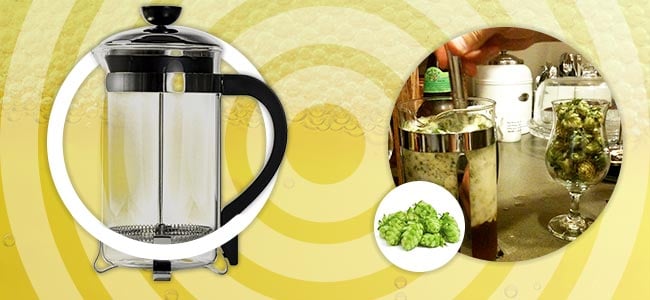
This isn’t the ideal dry hopping method as time is needed for all the aromatics to enter the beer. However, French pressing does provide the opportunity for you to experiment with flavours by pressing different hops. By trying out half a dozen different hop types, you could create half a dozen variations of the same beer.
Add some pellet hops and your beer to a French press. Give it some contact time. Then gently depress the plunger, trying not to flatten the beer too much by exciting too much carbon dioxide. Pour and drink.
This process may not extract all the aromatic compounds as a good soaking would. However, the French press method will give you a good idea of how a particular hop changes a brew’s character and flavour profile. This is a great chance to really personalise your beer.
KEG HOPPING
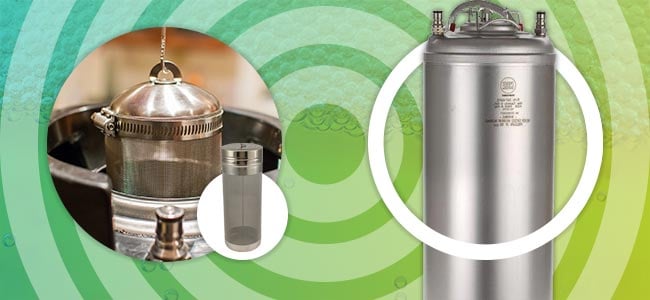
Keg hopping is exactly how it sounds. Hops are added to the neck of the keg and the beer is forced over them when drawn. The same bouquet garni used earlier will perform just fine, or whatever variation fits in your keg. Just make sure the vegetable matter is sieved as it will eventually kill your kegerator.
Similar to the French press method, keg hopping has the advantage of imparting more aroma as the hops are allowed to steep for the life of the keg. Unlike the French press, you are committed to the one hop until the keg is finished. This is great if you have struck flavour gold.
THE RANDALL
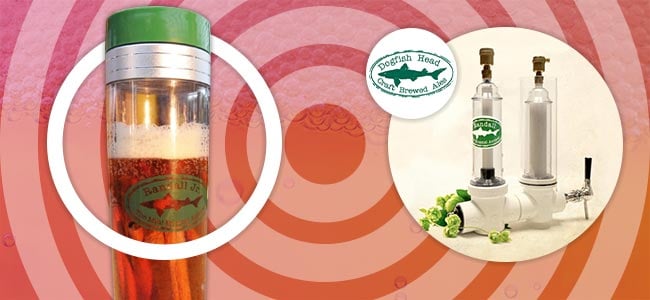
Pioneered by Dogfish Head Brewing, the Randall is an inline gadget that allows beer to pass through a hop selection as it is being pulled. This well-sealed device has an inlet from the keg and an outlet to the tap. The beer comes into full contact with the dried hops and carries away with it the complete spectrum of aromatics straight to the glass.
If you have skills, you could make your own Randall. Keep in mind that you will be dealing with some dangerously high, take-an-eye-out-if-you’re-not-careful, pressures. Alternatively, buy one online that’s ready to go.
DRY HOPPING DURING PRIMARY FERMENTATION
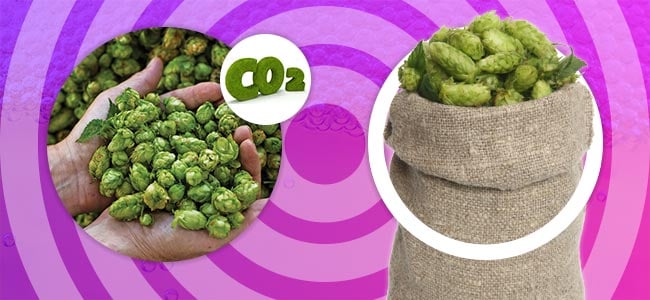
Preferred by some, not by others, this is the beauty of custom brewing your own beer. Dry hopping during the primary phase of fermentation also enhances aromas and adds depth to the flavour. There is some argument that the carbon dioxide produced by fermentation may dissolve the volatile oils of the hops. So there is still substantial experimentation happening with primary dry hopping at boutique and commercial levels.
To dry hop during primary, make your beer as per usual. When the primary fermentation has slowed, add the dry hops, loose or in a bouquet garni. Let them soak for a minimum of 72 hours before proceeding to the next step in the brewing process.
DRY HOPS ARE TOPS
Personalising something for maximum enjoyment means there is no right or wrong. There are a few firm fermentation rules, but there’s also plenty of room to experiment and tweak the recipe to suit your palate. Dry hopping is the best way to add depth of flavour and aroma to your home-brewed beer.
-
 4 min
15 July 2018
Top 10 Common Homebrewing Mistakes
Here we provide you with 10 classic mistakes when brewing beer at home. Check out what to avoid in order to achieve home-brewed excellence.
4 min
15 July 2018
Top 10 Common Homebrewing Mistakes
Here we provide you with 10 classic mistakes when brewing beer at home. Check out what to avoid in order to achieve home-brewed excellence.
-
 4 min
17 April 2018
What Are IBU And EBU In Beer?
The experience of brewing your own beer can be a daunting one. The complexity of the process culminates in that all important question: How do I judge the quality? Understanding IBU and EBU can...
4 min
17 April 2018
What Are IBU And EBU In Beer?
The experience of brewing your own beer can be a daunting one. The complexity of the process culminates in that all important question: How do I judge the quality? Understanding IBU and EBU can...
-
 1 min
22 September 2016
The Surprising Connection Between Cannabis And Hops
We have all heard never to mix bud and beers. “Grass before beer, you’re in the clear”. Still, anyone who has tried or tasted the two cannot deny they share a remarkably alike aroma. Why is that?
1 min
22 September 2016
The Surprising Connection Between Cannabis And Hops
We have all heard never to mix bud and beers. “Grass before beer, you’re in the clear”. Still, anyone who has tried or tasted the two cannot deny they share a remarkably alike aroma. Why is that?
-
 3 min
10 April 2014
How To Make Cannabis Beer
As you might already know, cannabis and beer go well together. But there‘s more to it than just taste - hops and cannabis are more closely related than you may think.
3 min
10 April 2014
How To Make Cannabis Beer
As you might already know, cannabis and beer go well together. But there‘s more to it than just taste - hops and cannabis are more closely related than you may think.













 United States
United States


